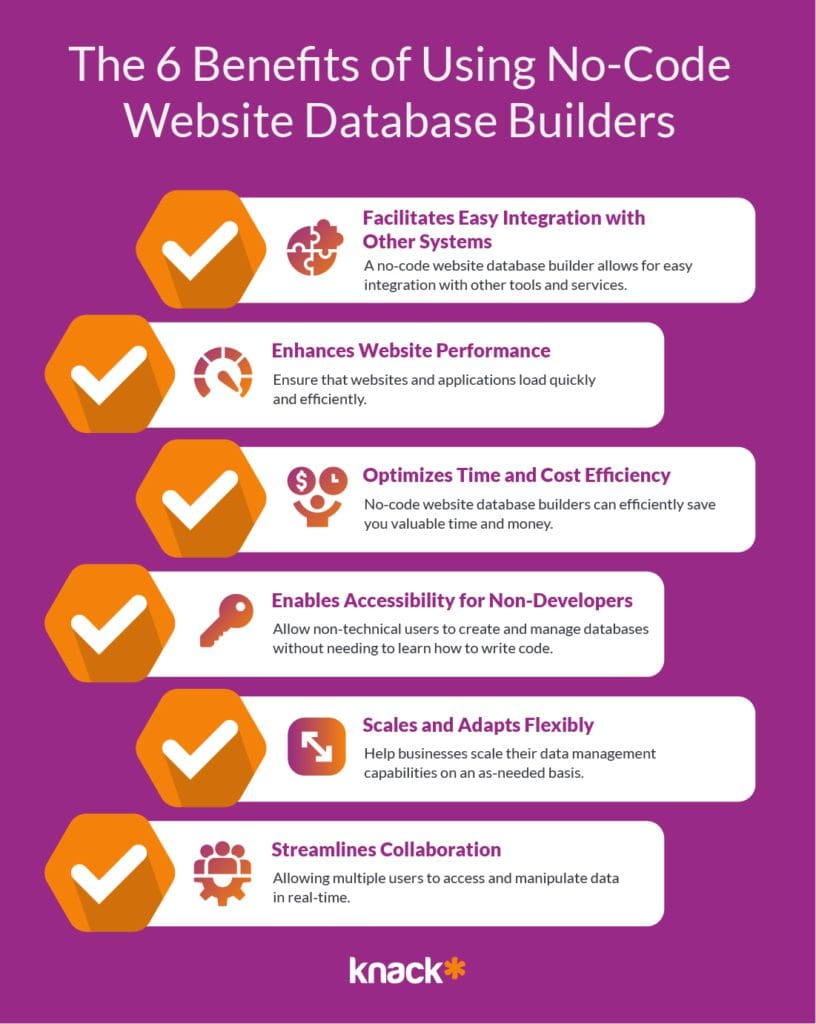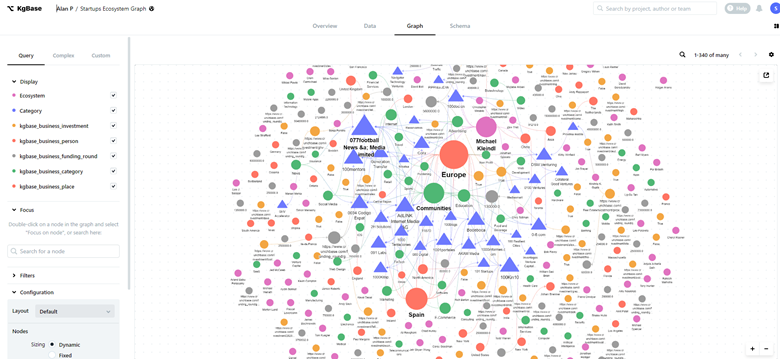How No-Code Tools Simplify Open System Database Creation for Every Person
How No-Code Tools Simplify Open System Database Creation for Every Person
Blog Article
A Comprehensive Overview to Implementing Scalable Data Sources Without the Requirement for Coding Knowledge
In the contemporary landscape of information monitoring, the capacity to carry out scalable data sources without coding expertise is ending up being increasingly important for organizations of all sizes. This guide aims to brighten the process, focusing on easy to use devices and intuitive interfaces that debunk database setup. By examining key functions, reliable techniques for execution, and ideal techniques for recurring management, we will address how also non-technical individuals can confidently browse this complicated terrain. What are the important components that can really equip these customers to take advantage of scalable data sources properly? The solutions may redefine your approach to information administration.
Understanding Scalable Databases
In the world of modern-day data management, scalable data sources have actually emerged as an important solution for companies seeking to take care of boosting volumes of info effectively. These data sources are created to accommodate development by enabling the smooth enhancement of sources, whether with horizontal scaling (including extra makers) or upright scaling (upgrading existing makers) This flexibility is important in today's busy digital landscape, where information is produced at an unprecedented price.
Scalable data sources typically utilize dispersed styles, which make it possible for information to be spread across several nodes. This circulation not just improves performance but also supplies redundancy, guaranteeing data schedule also in the occasion of equipment failures. Scalability can be a vital aspect for various applications, including shopping platforms, social media sites networks, and large data analytics, where individual demand can rise and fall dramatically.
Moreover, scalable databases usually feature durable data consistency models that stabilize efficiency and dependability. Organizations should consider their particular requirements, such as read and compose rates, data honesty, and fault resistance when picking a scalable database service. Inevitably, understanding the underlying concepts of scalable databases is necessary for companies aiming to flourish in an increasingly data-driven world.
Key Features to Search For
When examining scalable data sources, a number of essential features are vital to ensuring optimal performance and dependability. Firstly, think about the style of the data source. A dispersed style can enhance scalability by allowing information to be kept throughout numerous nodes, assisting in seamless information accessibility and handling as demand boosts.
Another critical function is data partitioning, which makes it possible for effective administration of big datasets by splitting them into smaller, more workable items (no-code). This technique not just enhances efficiency yet additionally simplifies source allotment
In addition, search for durable duplication abilities. This attribute guarantees information redundancy and high accessibility, decreasing downtime throughout upkeep or unexpected failings.
Efficiency monitoring devices are additionally crucial, as they provide real-time understandings right into system health and operational performance, enabling timely changes to preserve ideal efficiency.

User-Friendly Data Source Tools
Simplicity is a critical element in the layout of user-friendly data source devices, as it boosts accessibility for users with varying degrees of technological competence. no-code. These devices focus on instinctive interfaces, enabling individuals to produce, handle, and question data sources without calling for substantial programming understanding
Key attributes normally include drag-and-drop capability, visual information modeling, and pre-built templates that improve the setup process. Such tools frequently provide guided tutorials or onboarding processes that help with customer engagement and decrease the discovering contour. Furthermore, smooth integration with prominent data resources and services makes sure that individuals can conveniently import and export information, additionally streamlining procedures.

In addition, durable support and community sources, such as discussion forums and paperwork, improve the customer experience by supplying assistance when required. In general, straightforward data source devices encourage companies to harness the power of scalable data sources, making information administration easily accessible to everyone included.
Step-by-Step Implementation Overview
Just how can find more info organizations properly apply scalable databases to meet their growing data needs? The procedure starts with identifying details data needs, including the quantity, variety, and velocity of data that will be processed. Next, organizations should evaluate user-friendly database devices that supply scalability features, such as cloud-based services or handled data source services.
Once the ideal device is picked, the next step entails setting up the data source setting. This consists of establishing up circumstances, defining individual authorizations, and establishing data frameworks that align with service purposes. Organizations needs to after that migrate existing data into the new system, making sure data honesty and very little disruption to procedures.
Post-migration, performing complete testing is important; this includes efficiency screening under numerous load problems to make certain the system can take care of future development - no-code. Additionally, it is important to train staff on the database management interface to assist in seamless usage
Ideal Practices for Monitoring
Reliable administration of scalable databases calls for a tactical approach that focuses on recurring surveillance and optimization. To attain this, companies must implement robust monitoring devices that provide real-time understandings into database performance metrics, such as inquiry response times, source utilization, and purchase throughput. Consistently assessing these metrics can aid recognize traffic jams and locations for improvement.

Routine backups and calamity recovery plans are important to safeguard data honesty and availability. Developing a routine for evaluating these back-ups will make certain a trustworthy recovery procedure in instance of an unforeseen failure.
Moreover, performance tuning must be a constant procedure. Changing indexing strategies, enhancing questions, and scaling official site resourcesâEUR" whether up and down or horizontallyâEUR" will certainly assist maintain ideal performance as use demands evolve.
Finally, fostering a society of understanding sharing amongst group members will certainly allow continuous knowing and adaptation, making certain that the monitoring of discover here scalable databases remains effective and effective with time.
Conclusion
In verdict, the application of scalable databases can be effectively achieved without coding expertise via the utilization of intuitive interfaces and easy to use devices. By sticking to the described methods for configuration, information migration, and performance testing, individuals can browse the complexities of database monitoring effortlessly. Highlighting finest methods for recurring upkeep and collaboration more enhances the ability to manage scalable data sources effectively in a swiftly evolving data-driven setting.
In the modern landscape of data monitoring, the ability to apply scalable data sources without coding experience is ending up being progressively vital for organizations of all sizes.In the world of contemporary information administration, scalable databases have actually arised as a vital service for companies looking for to take care of boosting quantities of information efficiently.Moreover, scalable data sources frequently include durable data uniformity designs that stabilize performance and reliability.Exactly how can organizations efficiently execute scalable data sources to fulfill their expanding data demands? Next, organizations must review easy to use database devices that supply scalability attributes, such as cloud-based solutions or handled database solutions.
Report this page